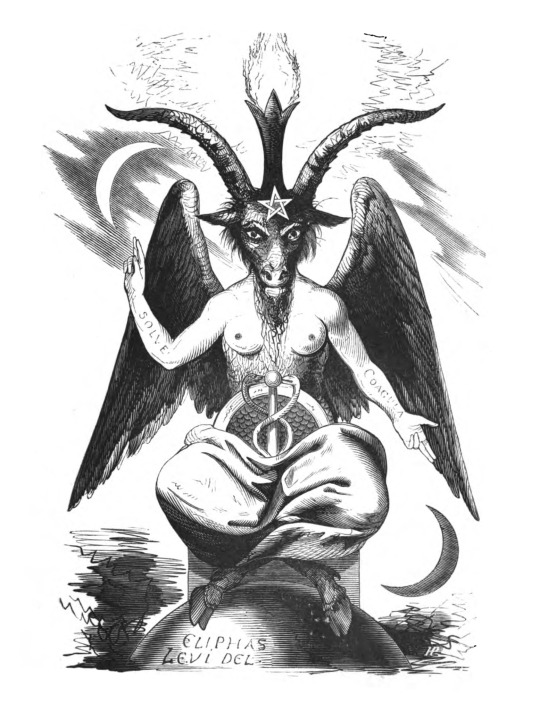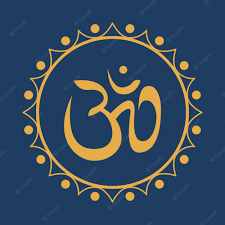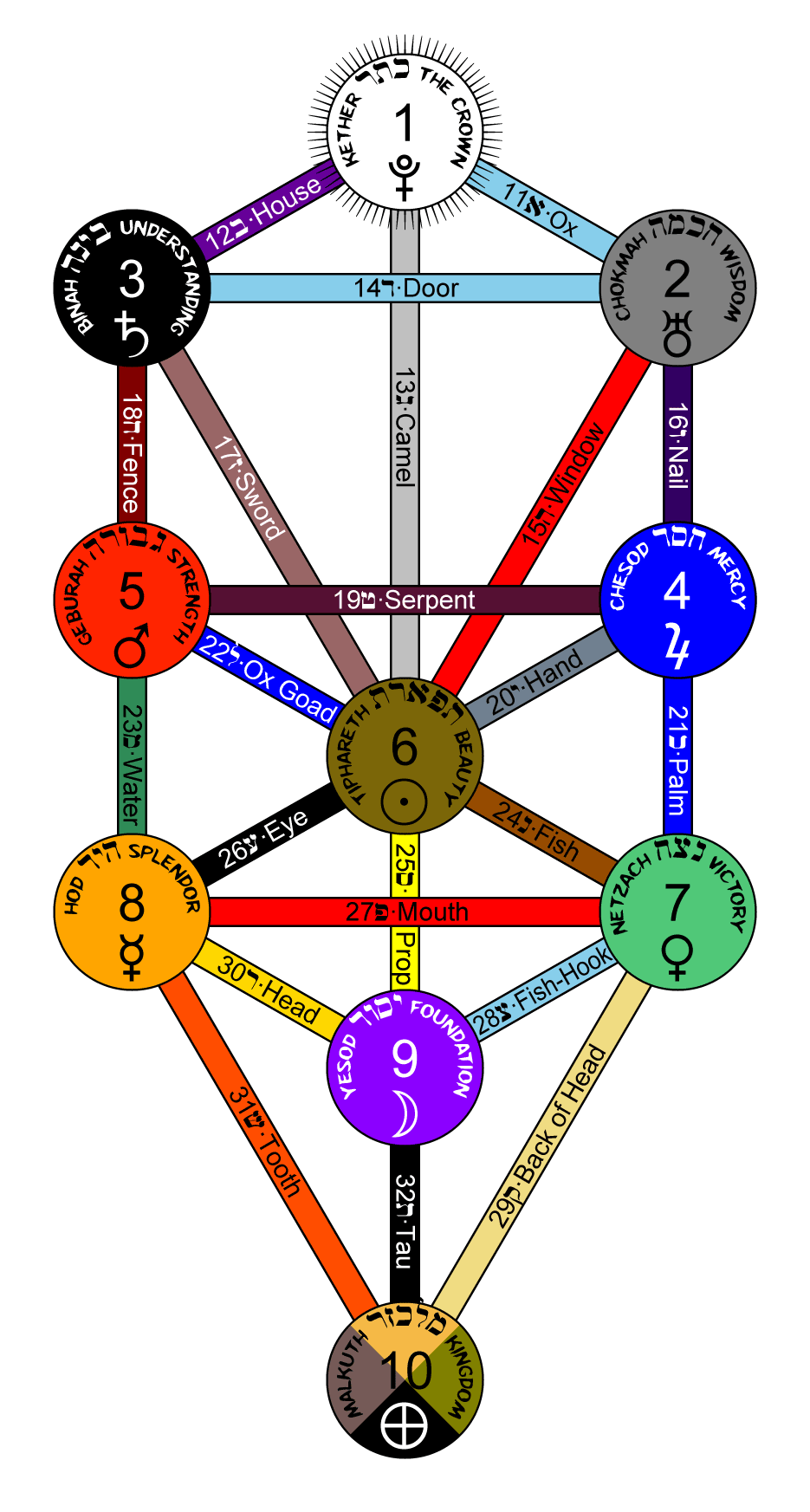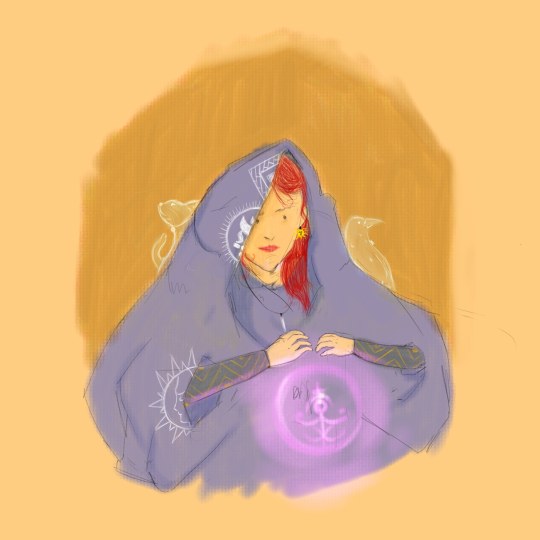#kabbalists
Text
I'm currently in the process of writing a book about my experience on the "otherside", and my ensuing philosophy and outlook when I returned.
I'll attach here some select quotes from what is, for the moment, a disjointed brainstorming session.
"The most fascinating book to me then, and now as an adult with a better understanding of the context and history behind it, was Genesis. It’s a creation myth: a bastard child that mirrors its mother, the Babylonian Enuma Elish. It follows many of the tropes that various other creation myths of the Fertile Crescent brought forth.
In reading the first few verses, it is notable to me that God’s creation is an act of turning ultimate simplicity into ultimate complexity; of division. Every act of creation is an act of seperating one into two, from the skies and the oceans, to the lands and the seas, to the days and the nights, to sun and the stars, to the fish and birds, etc. Every act of creation is one of an inherent binary, to define or create one thing, first its opposite must be defined. It follows then that if creation is an act of division, then destruction is an act of unity.
Another point of note in Genesis is the story of the serpent tempting Eve. To eat of the Tree of the Knowledge of Good and Evil is to become aware of the intrinsic binary; the division needed to create. What is most notable to me as an adult interpreting this book in a new light, is that it isn’t stated, not once, that the serpent lied to or deceived Eve. Instead, God confirmed the serpent’s testimony by not only cursing the serpent against Woman, but also by banishing mankind from the Garden in an effort to prevent them from eating of the Tree of Life as well; so that they could not gain everlasting life upon their newfound ability to create, and truly become like Him.
It is my theory, that if you were to read Genesis from the perspective of those who spoke it; nomadic Semites, it’s clear that civilization was the Original Sin. At the time, the division between peoples was largely between the nomadic and the settled. Invasions and battles were commonplace between this dichotomy in the Agricultural Revolution. From a nomad’s perspective, Genesis reads clearly as a warning against civilization. Once men begin to create the walls of their cities, and have to work in fields for the fruit that should’ve been given freely, suddenly man turns on man, Cain kills Abel.
Civilization is, in essence, mankind’s Magnum Opus. It is a reflection of our collective egos, our fear of suffering and need to escape the natural order of the world and the suffering that is inherent to division, and thus creation.
Once the Amoritic peoples settled in Babylon, and Babylon went from being a lowly Sumerian city-state to being its own proper kingdom, a particular man of note came into power: King Hammurabi. With King Hammurabi in power, an interesting text was publicized and largely popularized. I believe that the king himself commissioned its release, though that is up for debate in the anthropological community. It was titled the Enuma Elish, and I for one, believe it to be the most impactful piece of literature ever produced, and we see its stark effects to this very day. If you have not read it, I highly recommend that you do. In summary, it was the origin for the trope that consumed the world; child killing parent, and the deification of the child. In this story, a god named Marduk, or if given his proper title, Bel-Marduk, defeated the primordial gods Tiamat and Apsu. He was then granted kingship among the gods. This story is reflected well in Greek mythology, with Zeus defeating Cronos, and being hailed among the gods.
Many interesting things happened in Babylon’s culture with the release of this text, as well as in the wider Mesopotamian and Mediterranean regions. In Babylon, Bel-Marduk superceded the fertility goddess Ishtar as the patron god of the city. The city went from relying on the archetypal feminine intuition of priests and priestesses, who interpreted signs of the highly unstable gods, to being run by the archetypal logic of men and kings.
The release of the Enuma Elish, which demonized the unpredictable forces of nature as “chaos” and deified the secondary gods as harbingers of “order”, made a major shift in society, from matriarchy to patriarchy. In essence, we began vilifying the natural order of the world and deifying our own egos, our own ideas of how and why the world should operate; thus, civilization.
I think the original cities reflected our egos well, with large, ornate walls to defend and protect people from outside influence. The cultures within reflected that which people could collectively agree upon, and which objectively worthless material had arbitrary value – silk, gold, gems: useless outside of their walls, but suddenly priceless. Suddenly, we as a species went from worshipping primary constructs to deifying secondary and tertiary constructs. We went from praising the primordial fundamentals of nature to looking towards gods of constructs such as masonry, shepherding, etc. A notable god of this sort was Yahweh, a god of metallurgy. With the release of a single text, we lost sight of what holds true objective value, and the question of value became human-centric; what has value to us and us alone? Despite the divinity of life, we separated ourselves from the world, and placed value in our own creations.
As a separate thought, per this rough draft, Yahweh being synchratized with El in Canaan by Yahwehists, is of extreme note. I think there is substantial symbolism there. Yahweh, a god of metallurgy; of war and suffering. What is it that a metallurgist does? He places impure material into a crucible, then heats it into dividing purities from impurities, and by repeating this cycle, he turns a simple stone into strong and resiliant bronze. A god of metallurgy, is in essence, a god of alchemical transmutation, and a god of value in a Bronze Age society.
I think this deification of Yahweh by the Hebrews reflects the essence of existence well; and even reflects the Hindu constructs of Samsara and Moksha. Life itself is growth and change; matter in motion. Suffering is the aforementioned fire to the crucible; the catalyst. Put into metaphorical terms, Yahweh is the alchemist and we are his material, and throughout the aeons, throughout repeated cycles of suffering, repeated separation and unification, life and death, a purified, powerful, and resiliant product is produced; the philosopher’s stone. In this sense, think of the fundamental law of alchemy, which is etched into Baphomet’s forearms, “Solve et Coagula”, Solution and Coagulation."

"I had this thought some time ago, and this draft seems the perfect spot to preserve it.
If God is pure white light, Satan is the material; the prism through which the light divides into infinite variation. Satan is everything that makes you, you; and them, them. Satan is the timespace between you and every blade of grass.
In many cases, I would define our post-modern idea of Satan as simply timespace. In Western Mysticism, Satan is defined as the Self, the ego. Personally, I see that as just a symptom of Satan’s greater role.
In Greece, Cronos was demonized, and in Rome, it was Saturn who was vilified and first created the idea of a Satan or devil that is inherently separate to God. Prior to Roman Catholicism, the Jewish idea of Satan was not separate to God, but rather seen as any number of things that opposed God’s order. There was no singular, defined Devil.
Cronos and Saturn in their respective mythologies were gods of time. On this basis, I see our modern idea of Satan being a deciever, Bel’ial being the Demon of Lies, as timespace being illusory. Timespace is the essence of the cycle we find ourselves in, the underlying substance of suffering.
Satan is the essence of the infinite diversity and awe-inspiring variation we find ourselves in. He is what makes me separate from the very keys I type on; the space between every word, sentence, and paragraph.
Satan is the personification and demonization of complexity, while God is the personification and deification of simplicity. I for one, as a pantheist, consider these highly abstract concepts of “God” and “Satan” as essentially two sides of the same coin. They are two faces of the same head. I worship in my own reverence the All, or the equalization of division and unification, life and death, fear and love, matter and spirit. When I am asked what it means to be a pantheistic Satanist, my response is always the same: it means to see the Self in the All, and the All in the Self. In other words, I consider myself being separate from you, or the very technology that I filter my thoughts through, as being inherently illusory and worthless. The truth is that there is nothing that separates me from the stars over my head aside from my personal perception of spacetime.
You can consider it in this sense – the Universe, or whatever you wish to call it is, objectively, a massive soup of information. We as individuals can do our best to translate this soup with the tools we’ve been granted; our senses and perception that have been evolved specifically for the means of maintaining division and individuality. But what is in front of us; what we see, feel, hear, are all constructs of our mind – our best attempt at understanding this incomprehensible soup. But at the end of the day, at the end of the cycle, we are not separate from said soup, and we never were. It is a dream-state that we find ourselves in, a false belief that we perpetuate that I am not simply the same universal and mathematical information as a simple stone or dose of water.
This soup is also entirely undefined. It’s us who divides and defines everything, our own minds and egos acting as filters, that tell us a rock is separate from a stream, and that the inanimate and animate are not the same thing. We have a term for everything, and the further we get into definition, the more complex the language becomes."

"I have personally been heavily drawn to Western Mystical practices such as Hermeticism and Kabbalah, solely because these practices put my ideas into consumable terms. But Western and Eastern practices are the same essence, passed through the filter of culture. The fundamentals; the truisms, lessons, goals are the same. They are only different in form and practice. Judaism and Hinduism carry far more commonality than expected once one can see past literal dogmatism."


"In my current form of spirituality, I have divided Satan into two aspects, and consider his essence multifaceted. I have divided him between masculine and feminine archetypes, and work with each in accordance to my needs and introspection.
I have termed Satan as both the primary Daemon of the Dead Sea Scrolls, Bel’ial, and the modernized thelemic concept of the divine feminine, Babalon. I see these as the quintessential dichotomy of existence; the ebb and flow, push and pull, fear and love, give and take. I have conceptualized these two archetypes as the basis of holding on and letting go, be it of material, people, or life. True fear is to hold on in desperation, true love is letting go in faith. Put simply, when your only options left are fight or flight, choose acceptance.
The Beast and the Harlot, Binah and Chokmah, Adam and Eve, Saturn and Venus, Space and Time, it does not matter what names you give to the essence of division, it matters only how you manage to unify them."
"I believe, in my misanthropy, that human intelligence and an increase in cognition is not the blessing of the “wise man”, rather, it is the curse of a foolish species. Due in large part to our complex and nuanced neurology, we seek in a very simple natural state, complexity and nuance. We seek to stuff every minute detail of our world into tiny, well-defined boxes, and when we are out of boxes, we only need to create more. We have, over the course of our cognitive dominion, found an immense number of tiny boxes of nuance and definition, of which was once an ultimately simple existence, and with which we have created our civilizations; definitions may vary, and so too do cultures.
We have taken this awe-inspiring limitless and incomprehensible plane that we find ourselves on, and limited it; made it consumable for our own cognitive pleasure. We have invented fluid, ever-evolving languages, maths, sciences, etc to aid ourselves in mastering a world that only ever wished to provide.
In our grandeur we have culturally deified figureheads such as Neil DeGrasse Tyson and Carl Sagan as genius men with the capacity to reign in on what is beyond the layman, but they are in their own right, extremely limited. They have tried only to further the fruitless aims of mankind; of distinguishing the truth from the lie, of once more dividing what was always whole.
I care little for people in this current state of my life, let alone for secondary and tertiary constructs such as morality and money. Humanity has become largely enslaved by cultures; the boxes with which they are accustomed to agree with by means of influence and social pressures. There is no such division between Good and Evil, Rich and Poor – only an illusion, a prison of our own design."

#philosophy#philosophies#metaphysics#metaphysical#occultism#occult#writing#books#near death experience#baphomet#babalon#belial#theistic satanism#satanism#satan#kabbalah#kabbalistic#qabalah#qabalistic#qabbalah
88 notes
·
View notes
Text
Discounted healings
First healing 25% off!
For limited time
Get yours now 🌹✨🧿

#free tarot reading#psychic readings#tarot readings#kpop readings#pac reading#paid readings#psychic healer#tarotcommunity#energy healing#tarotblr#reikienergy#reikihealing#reiki master#kabbalah#kabbalistic#kabbalistic healing#metutelet#pendulo hebreo#hebrew pendulum#pendulum readings#pendulum healing
7 notes
·
View notes
Text

Sefirot✨🌙👁️
By:
https://www.deviantart.com/animafelis/gallery
#fantasy#digital art#digital painting#digital arwork#sefirot#binah#kabbalah#kabbalistic#fantasy art#deviantart#divine feminine#jewish mysticism#aesthetic#great mother#star goddess
8 notes
·
View notes
Text
Great Resource: the City University of New York’s Occult Library online.



All images sourced from CUNY Digital Occult Library
Top Left: Dragon eating its own tail; Top Right: Alchemists at work; Bottom: Kabbalah Tree of Life’s 10 Sephiroth
#alchemy#occult#tree of life#kabbalah#qabalah#kaballah#kabala#cabala#cabalah#cabbala#kabbalistic#qabbalah#cuny#city university of new york#sephiroth#Israel regardie#king solomon#umberto eco#foucault’s pendulum
18 notes
·
View notes
Text
Marla Segol. Kabbalah and Sex Magic: A Mythical-Ritual Genealogy, Magic in History. University Park, PA: The Pennsylania State University Press, 2021. Paperback edition. 210 pages.
Shop link in bio.
instagram
6 notes
·
View notes
Text
"witchy" goyische motherfuckers are on such thin ice today. always fucking with things you don't understand. to what end?
2 notes
·
View notes
Text
Pj, the witch!

#illustrators on tumblr#illustration#cats of tumblr#ghiblicore#grandma aesthetic#witchcraft#kabbalistic#art
8 notes
·
View notes
Text
The Hamsa is a kabbalistic amulet and as an important symbol in Jewish art. It is difficult to pinpoint the exact time when Hamsa emerged in Jewish culture, though it is clearly a symbol of Sephardic nature. Jews might have used the Hamsa to invoke the hand of God, or to counteract the Evil Eye with the eye embedded in the palm of the hand. Some Hamsas contain images of fish, in accordance with Rabbi Yose son of Hanina’s statement in the Talmud that the descendants of Joseph, who received Jacob’s blessing of multiplying like fish in Genesis 48:16, are protected from the Evil Eye like fish. He explains: “the water covers the fish of the sea so the eye has no power over them (Berakhot 55b).”Other icons besides eyes and fish have also found their way into the Hamsa, including the Star of David, prayers for the traveler, the Shema, the blessing over the house, and the colors of red and blue, both of which are said to thwart the Evil Eye.The symbol of the hand, and often of priestly hands, appears in kabbalistic manuscripts and amulets, doubling as the letter shin, the first letter of the divine name Shaddai. This mapping of the human hand over the divine name and hand might have had the effect of creating a bridge between the worshipper and God.

#hamsa#israel#amulet#evil eye#hand#israeli#jewish#judaism#kabbal#kabbalistic#jeruslaem#fertility#fatima#mariam#moses sister
46 notes
·
View notes
Text


Happy frog planter I painted for Tu’Bishvat🌱🌲
#jumblr#jewitch#tu bishvat#plant witch#kabbalistic#jewish witch#jewitches#i like frogs#frogblr#frog art#frog aesthetic#frogcore#frogposting#bumblebee
9 notes
·
View notes
Text
*tevye voice* but on the other hand, it is impossible not to acknowledge some of the particularly christian themes in the wrath of khan--
#i understand the irony of using tevye here but i cannot hear 'on the other hand' without thinking of him#also. VULCANS?!#coded as jewish? christian? japanese? lets take a vote#in which everyone voting only votes for the group they belong to because they see similarities between their cultural experiences#and outlooks and spock's.#which. let me clarify. is a GOOD THING. me seeing some vulcan practices as distinctly japanese and others seeing it as something else is#WONDERFUL and exactly what star trek is about. would just. love to see the diversity of responses i'd get if i asked what people saw in#vulcans. i know some of the specific jewish elements nimoy brought to the table in his characterization of him re: the rationalists and#kabbalists/the greeting being a blessing#but im not interested in canon#im interested in what people see of themselves reflected in the vulcans#as individuals#captain's log#trek#i forgot what i was talking about#im writing abt the genesis planet for a big secret ent project and referred to it in my head as the 'jesus planet' and then went. that's#rich for someone who just said that vulcan philosophy more closely mirrors buddhism than western religions#because its uhhhh where spock was resurrected#hi everyone#whats going on with all of you
26 notes
·
View notes
Text

Positive changes after the healings 💖 she finally got in a relationship… Every healing result is special and I’m very happy to hear your good news 💖 this woman had a history of unreciprocated love and assholes hehe. I try to unlock your lives so you get what you want 🔮🪬
#psychic healer#free tarot reading#kpop readings#paid readings#psychic readings#tarot readings#tarotcommunity#energy healing#pac reading#tarotblr#pranic healing#energy healer#healings#healing crystals#kabbalistic healing#tarot feedback#tarot review#healing feedback#healing review
5 notes
·
View notes
Text
i’m religious but in like a queer neo-spinozist schizo-jewish kabbalist post-biblical sense
18 notes
·
View notes
Text
I've always been a highly rational, logical, contemplative person, but in 2016, a sane person saw something incredibly insane when they died before being resuscitated.

What is after this life is not intended to fit in the human mind.
I'll attach a quote from a brainstorm-esque rough draft that I'm writing now.
"In 2016, prior to my near-death experience, I was a particularly obnoxious and grandiose Nihilistic atheist. I thought that I had everything figured out, and found comfort in that. Put simply, my existential philosophy was as follows: if there is nothing after death, which I was certain of, and “something” can’t become “nothing”, then it logically follows that here and now, all of this is nothing. Overall, I came to the conclusion as a fairly edgy teenager that existence is an incomprehensible illusion, and the truth is that nothing exists; I do not exist, nor do you or the wider world around us. This caused me to become notably psuedo-psychopathic, the question of value became null and void. Morality itself was meaningless, and the purpose of life became a matter of enjoying every moment to its absolute fullest, regardless of the danger to myself or others. I had a question that I asked myself – which novel would you prefer? One that is highly relatable but much too long, or one that is thrilling, with new situations around each corner, but much too short? This was my existential crisis. I, of course, as a teenager with limited foresight, took the latter novel, with a philosophy that we’ve termed now as, “I’m here for a good time, not a long time.” Survival was no longer a matter of importance, instead, I found myself chasing every sensation; I had the grandiose and idealistic fantasy of experiencing everything, learning everything, doing everything, in as short a time as possible. I was set on stuffing as many lifetimes into my existence as possible, before my sensation-chasing lead to an untimely death.
One thing that bothered me in that stage of my life was a seemingly simple question; what is “nothing?” Most would respond with, “it simply isn’t”, but that wasn’t enough for me. Because this was, and this was nothingness, correct? So what is nothing? That question, I could only find the answer to upon death, and I will share that briefly.
At the age of 19, I was binging a cocktail of ketamine and fairly pure crystalized MDMA. The mistake that I made here, was that I didn’t bring the materials required to intramuscularly inject ketamine, which was the only method that I had grown accustomed to, and had learned how to properly dose. I was with my friend, Vince, and my ex-girlfriend, Bria, in the back of an establishment that I worked in. I remember this event clearly. Instead of injecting the ketamine, I snorted the powder, and had no clue of my own limits. We were listening to music on my laptop, and while a song played that I particularly enjoyed was playing, something sudden came over me; an alien yet familiar sensation. I felt as though I was beginning to enter a panic attack; a deep, innate knowing that now is the time that I die, that this is it. But, interestingly and most notably to me, no sense of panic came. Instead, I felt a level of indescribable bliss that I cannot put into words. It was absolute contentment – I could suddenly see my entire life in front of me, and I was… happy with it. I felt that I had done what I had come to do, that I had succeeded, that now is the perfect time for death. I was… excited, rather than scared. Not in any depressive or suicidal sense, but rather in a sense of accomplishment and completeness.
The sensation of disconnection and dissociation grew in intensity, and rapidly. I told my friends that something was wrong; I had experienced a wide array of drug-induced experiences, from psychosis to k-holes and the like, but this was different. I got up from my chair, laid on my back, and quite simply accepted this sensation as it was. It was then that I lost consciousness, and later, a pulse overall. My friends, while I wasn’t present, called the paramedics. On my end, my identity ceased to exist. Some refer to seeing a “light”, but I saw through the light. It was everything and nothing simultaneously, every experience over the entirety of spacetime, lived within an instant. I was no longer myself, I was All, I was absolute, I knew everything, did everything, was everything. From beginning to end to beginning again, eternally. I could experience spacetime from the outside as a singular, objective thing. Infinite infinities, over and over again, forever and never. Ceaseless creation and destruction. And in my absolution, my omniscience, all knowing came to a singular gnosis, which reverberated throughout the entirety of existence as simply, “I Am.”
After I was resuscitated, I had a very loose grip on my identity, and the solidity of reality. It was like I was shattered into millions of miniscule pieces, and I was tasked, in order to survive in this perverse world, to piece myself back together in a panicked rush. At the time, I suffered from moderate amnesia, I had many instances of lifelong family and friends speaking to me as though they had known me for ages, yet I had no idea who they were.
It was at that time, that I had accepted that the otherside was absolute; that there was nothing greater than that, that I sought to define and stuff it into my tiny human brain. I found resonance in the highly abstract symbolisms of the occult, namely the Jewish Kabbalah, and the Hermetic Qabalah."
"**The answer to the question, “what is nothing?” is actually exceedingly simple. “Nothing” is the possibility of “Everything.” It is absolute potential. Everything is merely absolute potential being actively actualized; imagined, dreamed. In this sense, I like to imagine the Universe as simply God’s daydream; we are His eyes and His hands. You can think of a blank canvas; anything can go onto that canvas, and anything can happen to that canvas. The outward expanse of the void; creation, or rather spacetime, is only a series of infinite possibilities. I do personally believe in the Multiverse, in the sense that for the Universe to be truly infinite, all possibilities must exist, so to that extent, if I choose Left, there is a variant of myself who chooses Right. I consider predetermination to be a strong possibility; am I really choosing Left, or is that the only possibility which hasn’t been taken? Is this version of myself simply an iteration that has yet to finish his cycle?
Conversely, for “Everything” to be truly everything, it must contain the conceptual essence of nothingness. This lends itself to the idea that “Everything” and “Nothing”, are codependent on one another; consorts, in a sense. Everything is the kinetic application of the infinite potential of Nothing.
Everything (אין סוף אוך), is the kinetic application of the infinite potential (אין סוף), of Nothing (אין).
In Kabbalistic terms, this “Nothing” is referred to by three names, excluding simply G-d; Ein, Ein Sof, and Ein Sof Aur. For a rough translation, these can be interpreted as, “Nothing/Without”, “Without End/Infinity”, and “Endless/Infinite Light/Creation.” Some Hermetic Qabalists refer to these as the essences of, “Being, Life, and Light.” It is from there that the first Sephirot emanates, Kether, the Crown. Kether is the Godhead, the unification of division. From Kether comes Chokmah – imagination without form, a spark of intuition without ignition. From Kether and Chokmah comes Binah – intuition which has ignited and gained cohesion. This separation of Chokmah and Binah is where we find the first divide."
#near death experience#death and dying#death#afterlife#philosophy#occultism#occult#moksha#absolution#kabbalistic#kabbalah#qabalah#qabbalah#qabalistic#Spotify
8 notes
·
View notes
Text
He had been growing shabbier and shabbier with the years, and now prowled about like a veritable mendicant; seen occasionally by humiliated friends in subway stations, or loitering on the benches around Borough Hall in conversation with groups of swarthy, evil-looking strangers. When he spoke it was to babble of unlimited powers almost within his grasp, and to repeat with knowing leers such mystical words or names as “Sephiroth”, “Ashmodai”, and “Samaël”.
- H. P. Lovecraft, The Horror at Red Hook

#lovecraft#the horror at red hook#sephiroth#yes I know lovecraft meant the kabbalistic concept#but the story is much improved this way
6 notes
·
View notes
Text

most normal utena watcher
5 notes
·
View notes

